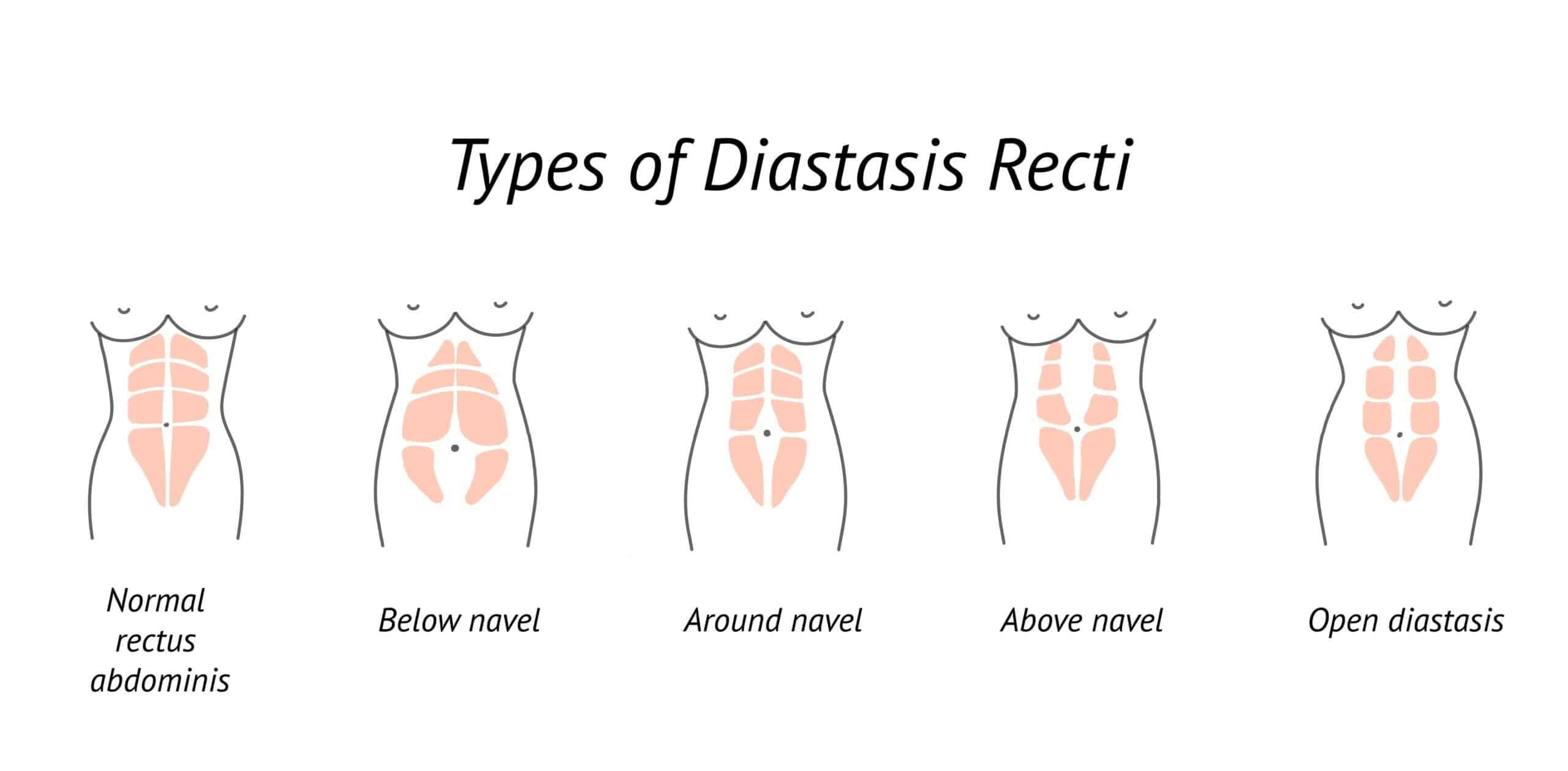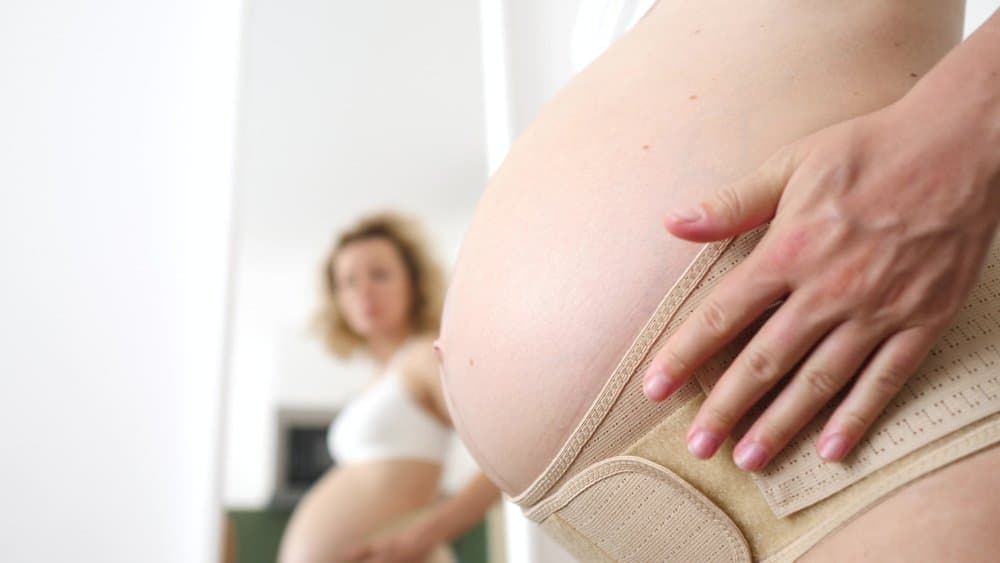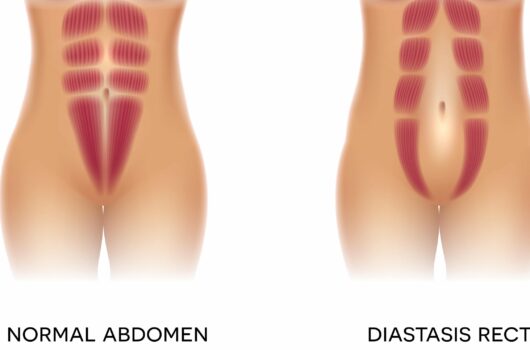Social media is obsessed with pregnancies and how quickly influencers and celebrities are able to snap back to their pre-pregnancy body. Although it looks easy online, it’s not as easy as you’d think. In fact, for some mothers, snapping back so quickly is almost impossible because they’re struggling with a pregnancy phenomenon known as diastasis recti.
Diastasis recti is quite common during pregnancy and almost every mother is going to get it. The difference is that some women will continue to struggle with diastasis recti even after giving birth.
This condition is responsible for that bulge that many pregnant women have. To prevent diastasis recti after giving birth, pregnant mothers should take care of their body while pregnant and do a lot of exercises, as well as supportive clothing and accessories.
What Is Diastasis Recti?
Diastasis recti is a condition when the rectus abdominis muscles, otherwise known as your abs, separate. These abs hold in your organs and run along your abdomen from the middle of your chest to your pubic bone in two parallel bands. They’re the two columns of abs that you might admire on yourself or your favorite celebrities.
When you’re pregnant, your belly grows, and the connective tissues that hold both parts of the muscles together can easily separate. This condition can happen to men, women and children; however, they’re almost always going to affect pregnant women.
In fact, it’s almost a given that most pregnant women will experience some form of diastasis recti when pregnant. The difference is that some women will bounce back while 53% will go through diastasis recti even after giving birth.
Those who are carrying a larger baby, are over the age of 35, are having twins or triplets, have a narrow pelvis or are getting Cesarean sections are more likely to struggle with this condition.
Common Diastasis Recti Symptoms
Other than having a looser belly, diastasis recti can also cause a whole host of health conditions. This condition can lead to the following complications and symptoms:
- Jeopardized trunk stability and overall mobility
- Back pain
- Incontinence
- Pelvic pain
- Pelvic floor dysfunction
- Pain during intercourse
- Weakened pelvic floor muscles
- Poor posture
- Inability to activate or use core muscles
In some extreme cases, diastasis recti can also lead to the development of hernias, like umbilical hernias. This condition can also lead to the need for repeated Cesarean sections. The scar tissues can adhere to improper positions and cause other issues for subsequent pregnancies.
Types of Diastasis Recti

Diastasis recti is separated into different types depending on its severity, as noted in the image. Not all types are a need for concern, and some diastasis recti is common during pregnancy. The issue is that some women never really recover from diastasis recti and will continue to suffer because of the separation of the connective tissues.
They’re more likely to experience a whole host of health concerns, as mentioned above, like poor posture and pelvic floor dysfunction. It’s important for these women to determine the type of diastasis recti that they have, so they know how to better treat the issue.
Normal-Normal Diastasis
If you’re pregnant, you’ll be surprised by just how much your belly can grow. Your uterus, itself, can grow 500 to 1000 times its pre-pregnancy size. , so there’s bound to be some muscle separation at the midline. Gaps that are up to 1 inch wide are normal and nothing to be concerned about. Usually, these gaps will close on their own.
Open Diastasis
With open diastasis, there is an opening at the midline near the navel by at least 3 finger lengths or more. This is actually a really common type of diastasis recti, and fairly easy to treat. It’s considered a fairly mild case and can be resolved with regular exercise.
Open Above Navel Diastasis
Open above navel diastasis recti means that the abs separate above the belly button, but are intact underneath the belly button. This is one of the most common types of diastasis recti because the top part of your belly will expand significantly when you’re pregnant. To treat this condition, try exercises that target the upper abdominal muscles.
Open Below Navel Diastasis
This type of diastasis recti means that the gap appears below your navel or belly button. The muscles underneath the belly button are split while the abdominal muscles are still together. To treat this, you’ll need to focus on doing more lower abdominal exercises.
Complete Diastasis
Completely open diastasis recti is perhaps the most severe condition of them all. When this happens, the entire linea alba, otherwise known as the connective tissue holding your abs together, is compromised. This means that you’ll have a difficult time activating your ore muscles and are more prone to severe symptoms, like hernias. This is also one of the most difficult conditions to treat.
3 Ways to Prevent Diastasis Recti
The best way to deal with diastasis recti is to prevent it from happening through preventative measures. Fortunately, there are some things that you can do to keep your abdominal muscles tight and together.
#1. Exercise

The best thing that you can do to prevent diastasis recti is to exercise! It’s good for your mental health and physical health as well; however, not all exercises are ideal for preventing diastasis recti. You want to try exercises that do not put too much of a strain on your core muscles. Avoid traditional core exercises, like crunches and planks, twisting your trunk and non-modified push-ups. Let’s take a look at some exercises that can help prevent diastasis recti below.
Modified Crunch
Although most experts recommend avoiding crunches, you should try the modified crunch, as it will allow you to manually pull your abdominal muscles together to prevent them from separating.
Start by lying on your back with your knees bent. Wrap your hands around your waist and pull your abdominal muscles together while you also expand your belly. When you exhale, contract your abdominal muscles and pull them inwards. Raise your head off the floor as well to better activate those muscles. Return back to the start position and repeat.
Bird Dog
One of the most recommended prenatal exercises is bird dog. This exercise strengthens your cores and builds stability.
Start on your hands and knees in a tabletop position with your wrists positioned a little bit above your shoulders and your knees positions a little bit below your hips. When you inhale, extend one of your arms forward and the opposite leg back while maintaining a flat back. When you exhale, squeeze your abs as you draw your elbow to the knee. Then, extend back out to the start position and do the other side.
Kegel Exercises
Kegel exercises not only strengthen your abdominal muscles, but also your bladder, uterus and bowels. It’s a great prenatal exercise because it’ll help you learn how to relax and control the muscles needed for labor.
Tighten your pelvic floor muscles for about 3 to 10 seconds depending on how comfortable you feel. Try to lengthen the contraction time every other session. Hold for another 10 seconds and try to do about 10 repetitions a day.
Transverse Abdominis Foundation
Your transverse abdomininus muscles are a paper-thin muscle that wraps around your belly. It can lift up your spine and stabilize your core. It doesn’t really create any motions, but it’s a great muscle to strengthen and work on when pregnant. It’ll help alleviate back pain and other issues.
There are many different types of transverse abdominis exercises. Let’s look at one of the simplest exercises.
First, lie on your back with your knee bent and breathe. Place a gliding disk or a workout ball under your feet. When you exhale, pull your leg out so that it is horizontal to the floor. When you inhale, bring your leg back in. Try not to activate your obliques and to activate your transverse abdominis muscles instead.
Diaphragmatic Breathing
Diaphragmatic breathing can also help. This is a breathing exercise that strengthens the diaphragm. It’s also often used as the basis for meditation. This type of breathing can help you relax, lower the amount of cortisol in your body, lower your heart rate and blood pressure and improve the stability of your core muscles.
To practice diaphragmatic breathing, sit in a comfortable position and relax your shoulders. Place your hands on your chest and stomach, and breathe in through your nose for about two seconds. You want your stomach to expand while your chest remains relatively still. Purse your lips to make a “shhh” sound, press gently on your stomach and exhale for another two seconds. Repeat this exercise for several minutes.
#2. Wear Belly Supports and Kinesio Taping

The reason why so many women experience diastasis recti post-pregnancy is because they’re abdominal muscles are under a lot of strain carrying the baby. Their belly is huge, heavy and constantly pulls at the abdominal muscles.
The best way to prevent diastasis recti is to take some of that pressure off by wearing a belly band for support. These bands will lift your pregnant belly off your bladder and will also take a lot of strain off your abdominal muscles. They’re great at preventing backaches and promoting good posture.
You can also try kinesio taping halfway into your pregnancy. Tape your abdomen together in an x-shape using kinesio tape, so that your abdominal muscles are being pulled together rather than apart. The tape will prevent your muscles from separating. Most experts recommend trying kinesio taping in the third trimester.
#3. Practice Good Posture

Don’t put too much pressure on your abdominal muscles when you’re pregnant. Avoid heavy lifting and try to avoid any exercises that may put any pressure on your abdominal muscles. If you have to do heavy lifting, squat and use your leg muscles to lift.
You should also be careful when getting out of bed because the act of getting out of bed can put a lot of strain on your abdominal muscles. Try to roll over onto your side and use your arms to push yourself up instead of sitting straight up.
How to Check for Diastasis Recti
Do you have a post-pregnancy pouch? Are you unsure whether your belly is a natural part of pregnancy or whether you have diastasis recti and need to seek medical help? Take a look below on how to diagnose this condition on yourself:
- Lie on your back with your foot flat on the floor
- Place your finger on your belly button
- Curl your shoulders up to contact your abdominal muscles
- Palpate your fingers up towards your ribcage and down to your pelvis
- If you feel a split, turn your fingers horizontally to see how far across the split may be
This will allow you to determine the type of diatasis recti that you have, based on where the split is. The severity of the diastasis recti is measured by how large the gap is. Anything that’s over 2 cm is considered a problem, and you’ll need to speak with a medical professional as soon as possible.
Don’t Worry! It’s Treatable!
Even if you’ve tried all of our recommendations above, there’s still a chance that you’ll develop diastasis recti. Don’t worry if you do because it’s treatable! There are certain exercises that you can try post-pregnancy that can help bring your abdominal muscles back together with time.
